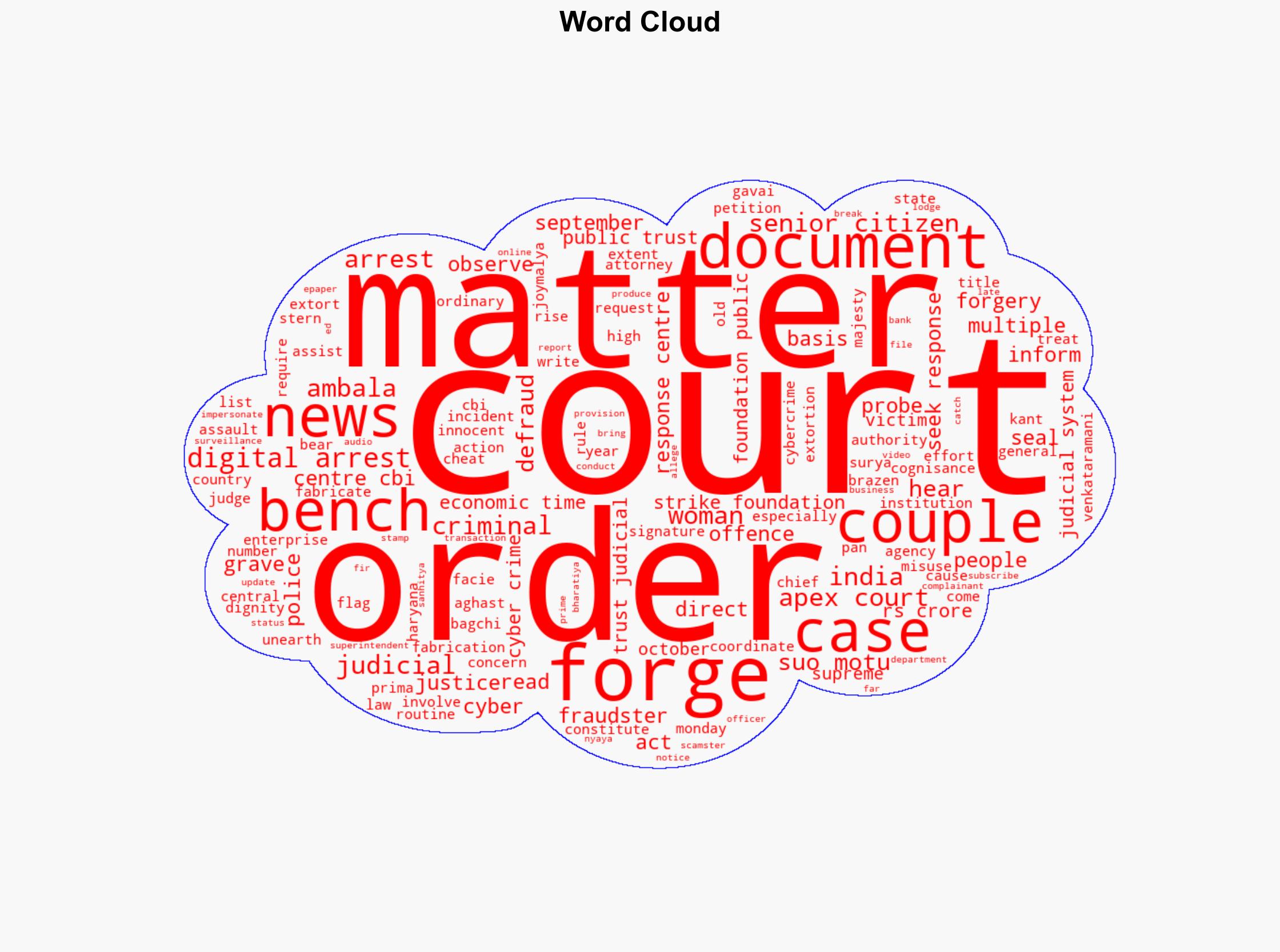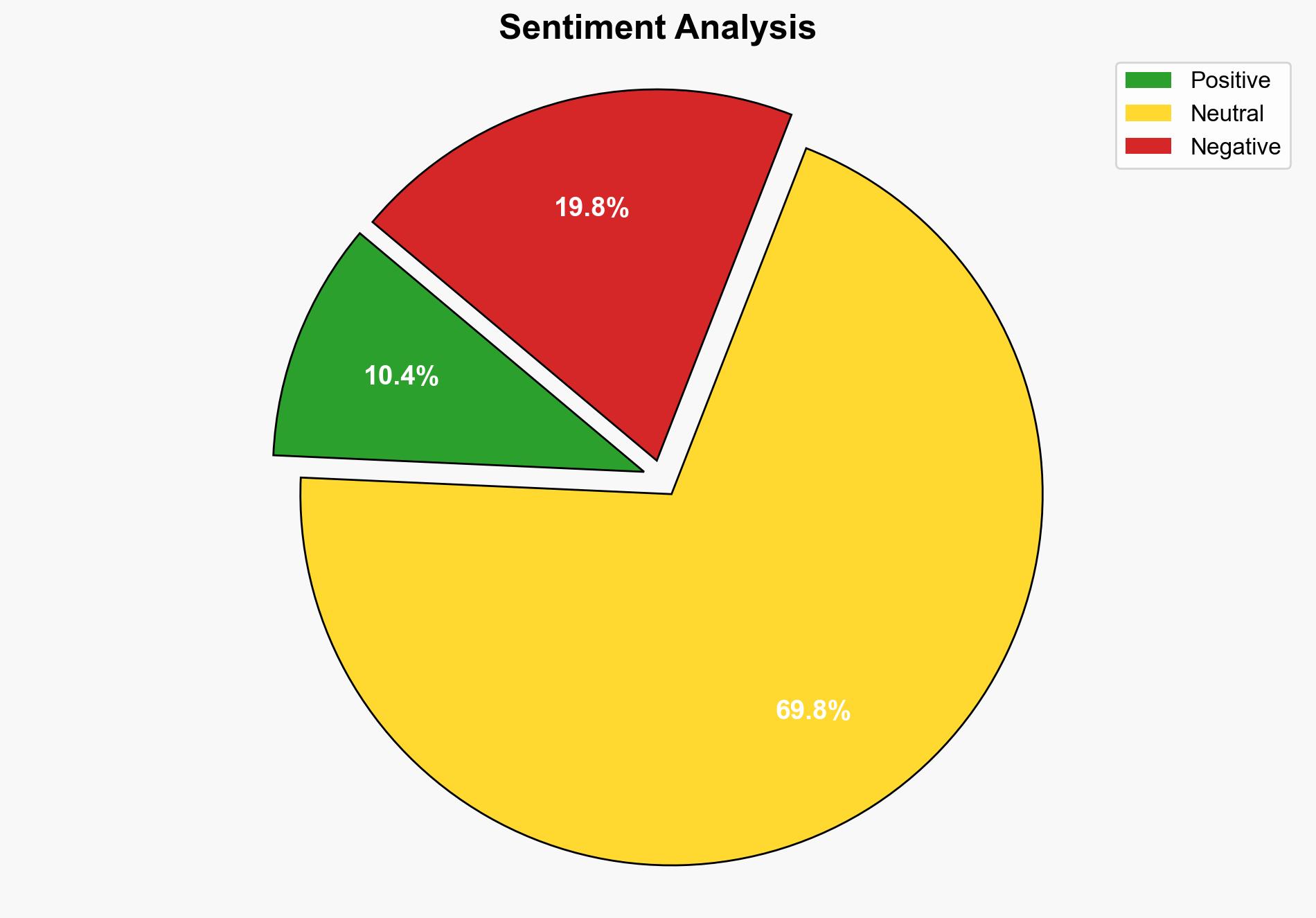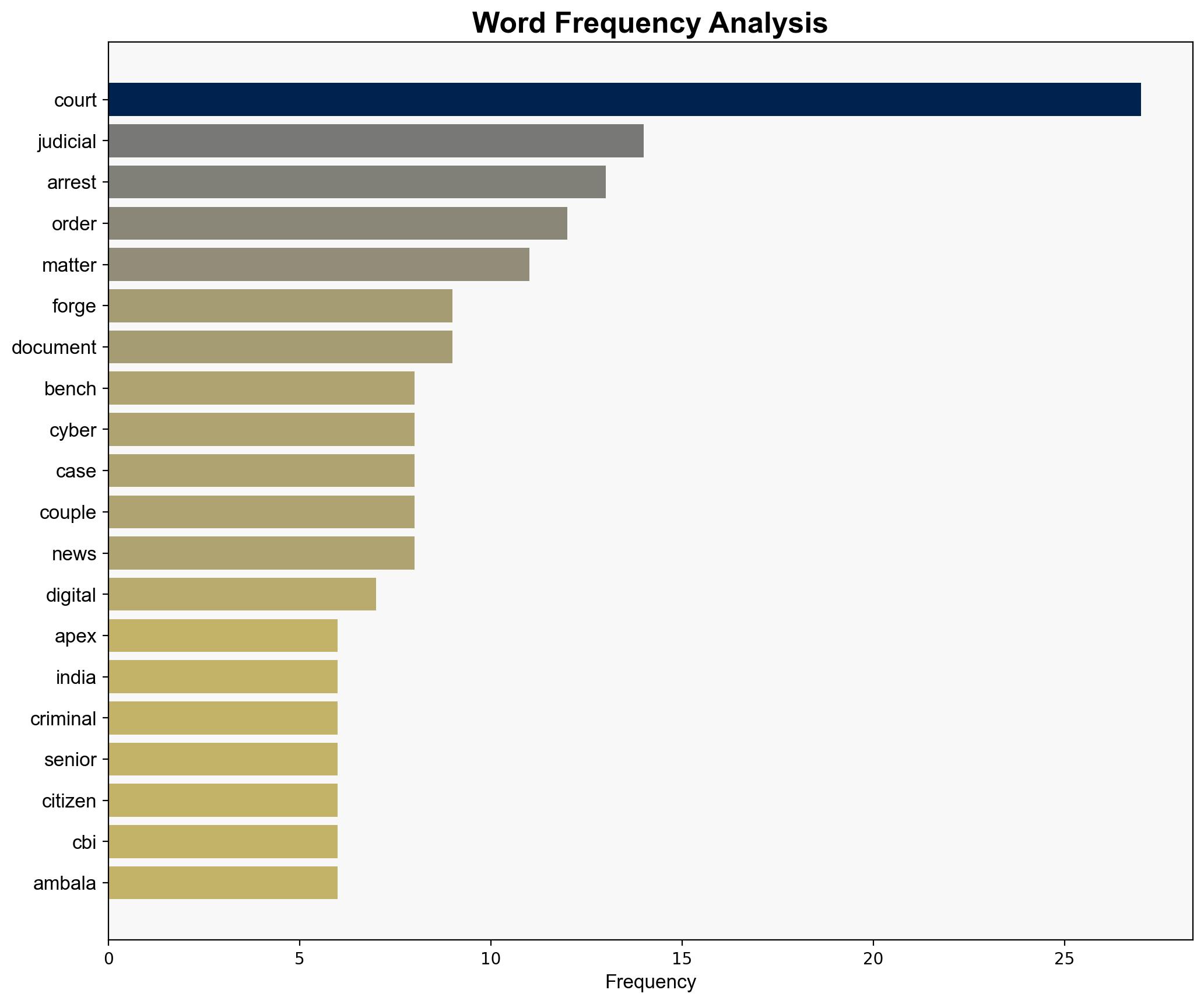SC to hear suo motu matter relating to victims of digital arrest on Oct 27 – The Times of India
Published on: 2025-10-25
Intelligence Report: SC to hear suo motu matter relating to victims of digital arrest on Oct 27 – The Times of India
1. BLUF (Bottom Line Up Front)
The Supreme Court of India is addressing a significant issue involving the misuse of judicial authority through forged documents leading to digital arrests. The most supported hypothesis suggests a coordinated criminal network exploiting systemic vulnerabilities. Confidence level: Moderate. Recommended action: Strengthen cybersecurity measures and enhance inter-agency collaboration to prevent further exploitation.
2. Competing Hypotheses
1. **Hypothesis A**: A coordinated criminal network is systematically exploiting vulnerabilities in the judicial and law enforcement systems to conduct cyber extortion and digital arrests.
2. **Hypothesis B**: Isolated incidents of forgery and cybercrime are being opportunistically executed by independent actors without significant coordination.
Using ACH 2.0, Hypothesis A is better supported due to the scale and sophistication of the operations, as well as the repeated targeting of senior citizens across different regions, indicating a pattern consistent with organized crime.
3. Key Assumptions and Red Flags
– **Assumptions**: The judicial system’s integrity is assumed to be robust, making any breach significant. The coordination between central and state police is assumed to be effective.
– **Red Flags**: The rapid increase in such cases suggests potential underreporting or misclassification of incidents. The reliance on forged documents implies possible insider involvement or significant lapses in document security.
4. Implications and Strategic Risks
The pattern of digital arrests poses a threat to public trust in the judicial system and could lead to increased fear and reluctance to engage with digital platforms. Economically, it could deter investment in digital services. Geopolitically, it may invite scrutiny on India’s cybersecurity infrastructure. The psychological impact on victims, particularly senior citizens, could be profound, leading to societal unrest.
5. Recommendations and Outlook
- Enhance cybersecurity protocols within judicial and law enforcement agencies.
- Establish a task force to investigate and dismantle the criminal network.
- Conduct public awareness campaigns to educate citizens on recognizing and reporting such scams.
- Best-case scenario: Rapid identification and neutralization of the criminal network.
- Worst-case scenario: Escalation of incidents leading to widespread mistrust in digital governance.
- Most likely scenario: Gradual reduction in incidents as awareness and security measures improve.
6. Key Individuals and Entities
– Justice Surya Kant
– Justice Joymalya Bagchi
– Attorney General Venkataramani
– Superintendent of Police, Cyber Crime, Ambala
7. Thematic Tags
national security threats, cybersecurity, counter-terrorism, regional focus




